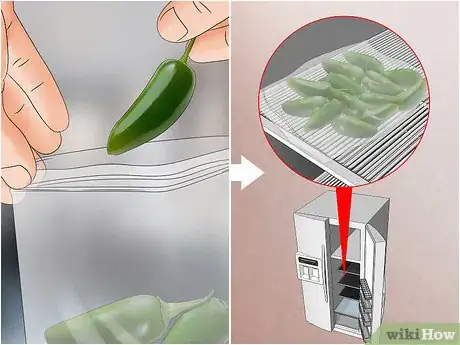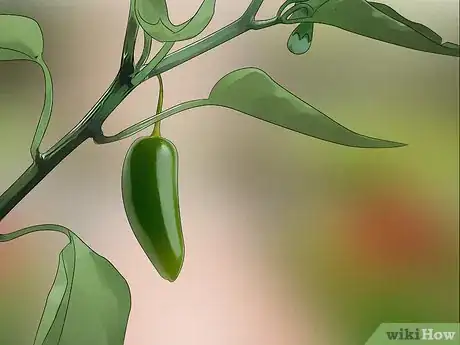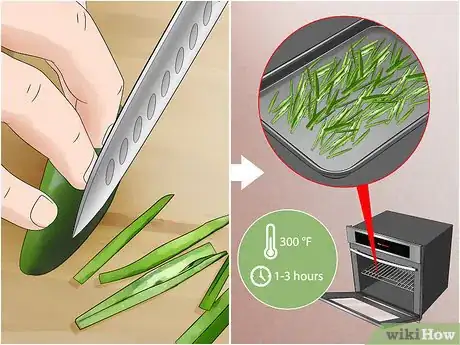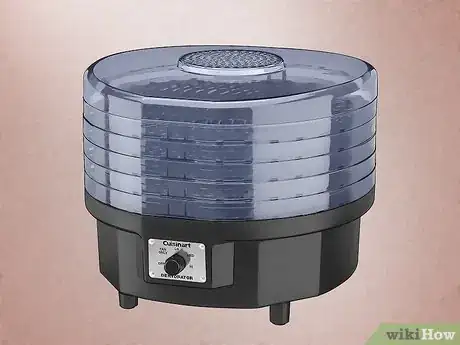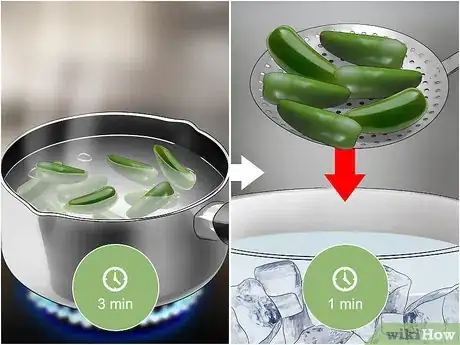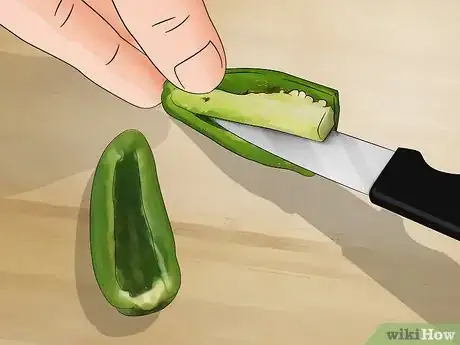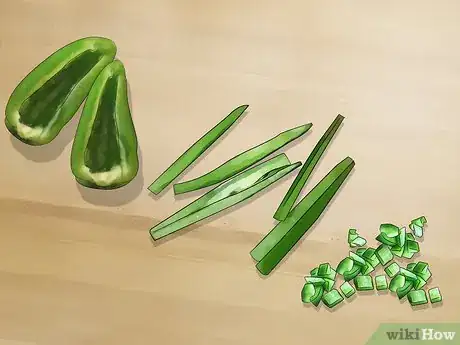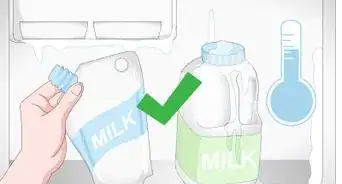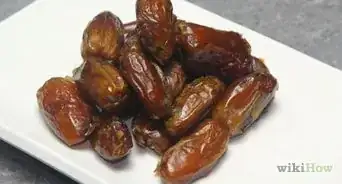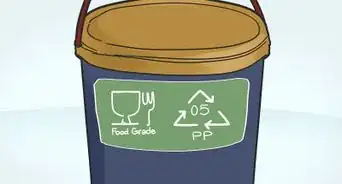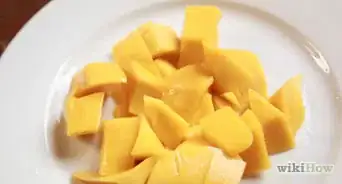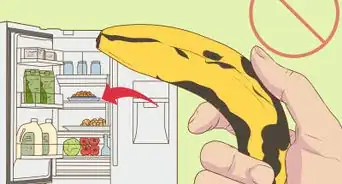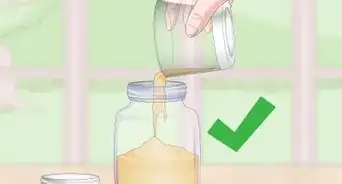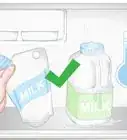This article was co-authored by wikiHow Staff. Our trained team of editors and researchers validate articles for accuracy and comprehensiveness. wikiHow's Content Management Team carefully monitors the work from our editorial staff to ensure that each article is backed by trusted research and meets our high quality standards.
This article has been viewed 110,673 times.
Learn more...
You may want to store jalapenos to eat within a few days, a few weeks, or even a few months. When and how you want to eat your jalapenos determines the way you should store them. If you want to eat your jalapenos fresh, it’s best to only store them in the refrigerator for up to a week. You will need to find other methods for storing, such as freezing or drying, if you want to store jalapenos for more than a week.
Steps
Storing Jalapenos for the Short Term
-
1Place the jalapenos in a plastic bag. Ideally, put them in a plastic bag that has a zip lock or can be closed. Then, place them in the refrigerator. Eat the jalapenos within one week of storing.
- A few signs indicating that the jalapenos have gone bad are when the skin becomes soft and wrinkled in appearance. Throw away the jalapenos immediately if you see mold growing on them.
-
2Use a paper bag if you don't want to use plastic. Once you’ve bought the peppers or picked them, put them in a paper bag. Then, place the paper bag in the crisper of your refrigerator. The jalapenos will stay good up to one week. Throw the jalapenos away when they appear soft, wrinkled, or moldy.
- In some cases, the jalapenos will stay good for up to two weeks.
Advertisement -
3Allow peppers to stay on the vine if you lack storage space. If you grow your own jalapenos, you don’t have to pick them as soon as they are fully grown. You can keep them on the vine for some time, which will free up storage space in the refrigerator. They may, however, shrivel and fall off the vine on their own after a while. Once they fall of the vine, you eat them immediately or store them for up to one week.
- Vine ripened jalapenos are strongest in flavor, so keep children and pets away from any jalapenos that have fallen off the vine.
Drying Jalapenos
-
1Hang the peppers in a dry location. String thread through a needle, and push the needle through the part of the pepper just below the stem. Push the jalapeno further down on the thread and then repeat the process with the rest of the jalapenos. You can put as many jalapenos on the string as you’d like. Then, gang the strung jalapenos in a dry location. They will dry within 3 to 4 weeks. After that, you can leave them up as long as you’d like, or take them down and store them in a dry location. The jalapenos will stay good indefinitely once they are dry.
- Cellars usually aren’t good for drying because they are often moist. Hanging them near a window in your kitchen would be a good choice.
- You can also grind dried jalapenos up and add them to meals. Use a spice grinder to grind the dried jalapenos. Then, put them in an airtight container, and they powder will stay good for up to 1 year.
-
2Bake strips of jalapeno peppers in the oven. Cut the jalapenos into strips or thirds. Then, put then on a cookie sheet and place them in the oven at 300 °F (149 °C). Leave them in the oven for 1 to 3 hours. After that, you can store them in a glass jar or grind them up. The dried jalapenos will last indefinitely.
- If you store them in a glass jar, make sure to keep them out of sunlight. Keeping them in the pantry or in a cabinet is ideal.
-
3Use a dehydrator to speed up the process. Another option for drying is to put them in a dehydrator. You can purchase online or at some supermarkets. Place the jalapenos in the dehydrator and allow them to dry out on soft heat overnight. Dried jalapenos that have been stored in a jar and kept out of sunlight will pretty much last indefinitely.
- You can also grind up dehydrated jalapenos with a spice grinder.
Freezing Jalapenos
-
1Blanch jalapenos to retain nutrients. It is not necessary to blanch the jalapenos but doing so helps retain nutrients and texture. To blanch, put the jalapenos in boiling water for 3 minutes. Then, immediately dump them into ice water and stir for about 1 minute.[1]
-
2Remove the seeds from the jalapenos. You can choose to remove the seeds from jalapenos to save you time later, or you can keep them frozen until you decide to defrost the jalapeno. If you want to go ahead and remove them, simply slice open the jalapenos and remove the seeds. Some think removing the seeds will make the jalapenos less hot once frozen, but this is not true.
- You can use the seeds to plant new jalapenos. You can use the seeds immediately, or store them in an airtight container for 3 to 5 years.
- You can also use the seeds in cooking to spice up the dish. Seeds stored in an airtight container will last 3 to 5 years.
-
3Dice, chop, or cut the peppers into strips. The way you cut the jalapenos depends on your personal preference. It doesn’t matter if you cut them into strips but change your mind later. You can always dice them up in the future.
- It’s also an option to freeze whole jalapenos.
-
4Put the jalapenos in an airtight container. Ideally, the airtight container should be made for freezer storage. The jalapeno will stay good in the freezer for 10 to 12 months. Once thawed, the jalapenos will usually be soft, but they will be good to use in cooking.
- You can thaw the jalapenos by leaving them out for a few hours, or by adding them to a heated pan as you cook. The jalapenos will thaw as they are being cooked.
Community Q&A
-
QuestionTo made pepper jelly, do I take the seeds out of the peppers?
 Community AnswerRemoving the seeds will depend on how much heat you like. Most of the "heat" from jalapeños is in the seeds. Remove the seeds for a milder jelly, or leave them in for extra spice.
Community AnswerRemoving the seeds will depend on how much heat you like. Most of the "heat" from jalapeños is in the seeds. Remove the seeds for a milder jelly, or leave them in for extra spice.
Warnings
- Make sure to wear latex gloves when handling jalapenos or wash your hands thoroughly after handling. You can get a chemical burn if you don’t protect yourself.⧼thumbs_response⧽
- Do not eat jalapenos if you notice mold or black spots. If you notice any discoloration, throw them away.⧼thumbs_response⧽
Things You’ll Need
- Plastic bag
- Paper bag
- Needle
- Thread
- Knife
- Cookie sheet
- Dehydrator
- Pot (for boiling water)
- Airtight container
References
About This Article
If you keep them in a plastic or paper bag in your fridge, fresh jalapenos can stay good for up to two weeks. But if you want your peppers to keep longer, try drying them. Use a clean needle and thread to string up a row of jalapenos. Push the needle through the top part of each pepper, just below the stem. Hang the jalapenos in a dry place, such as near a sunny window in your kitchen, and let them dry for 3-4 weeks. If you’re in a hurry to dry out your jalapenos, cut them into strips and spread them out on a baking sheet, then bake them at 300 °F (149 °C) for 1 to 3 hours. Or, put them in a dehydrator on a low-heat setting overnight. As long as you store them in an airtight container in a cool, dry place, your dried jalapenos should stay good for at least a year. If you prefer the taste and texture of fresh jalapenos to dried ones, freezing them is another long-term option. Boil the jalapenos for 3 minutes, then dump them into ice water for about 1 minute to blanch them and help preserve their texture and nutrients. Remove the seeds and cut the jalapenos to the desired size and shape. Put them in an airtight, freezer-safe container and store them in your freezer for up to 1 year. They’ll be a little softer than fresh jalapenos once they thaw, but will make a great addition to all sorts of cooked dishes. To learn how to dry jalapenos for storing, read on!
